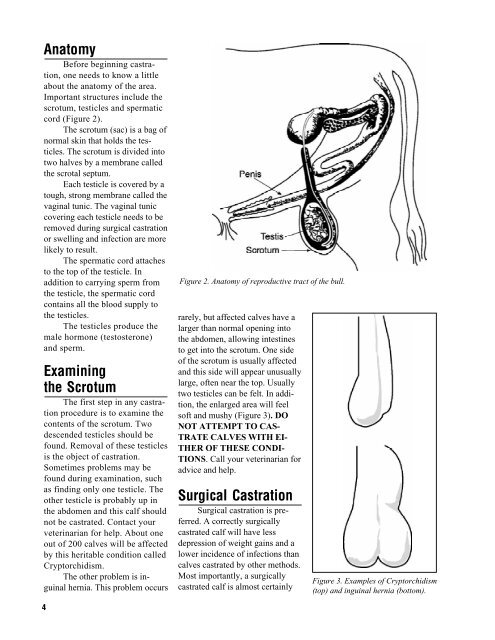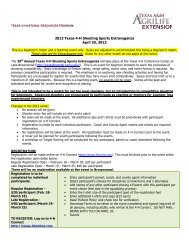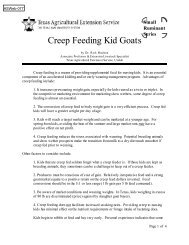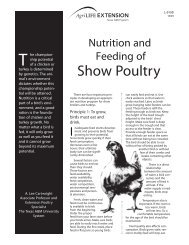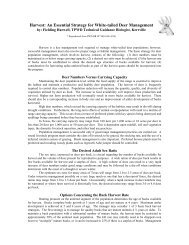Castrating Beef Calves - Walker
Castrating Beef Calves - Walker
Castrating Beef Calves - Walker
- No tags were found...
Create successful ePaper yourself
Turn your PDF publications into a flip-book with our unique Google optimized e-Paper software.
Before beginning castration,one needs to know a littleabout the anatomy of the area.Important structures include thescrotum, testicles and spermaticcord (Figure 2).The scrotum (sac) is a bag ofnormal skin that holds the testicles.The scrotum is divided intotwo halves by a membrane calledthe scrotal septum.Each testicle is covered by atough, strong membrane called thevaginal tunic. The vaginal tuniccovering each testicle needs to beremoved during surgical castrationor swelling and infection are morelikely to result.The spermatic cord attachesto the top of the testicle. Inaddition to carrying sperm fromthe testicle, the spermatic cordcontains all the blood supply tothe testicles.The testicles produce themale hormone (testosterone)and sperm.The first step in any castrationprocedure is to examine thecontents of the scrotum. Twodescended testicles should befound. Removal of these testiclesis the object of castration.Sometimes problems may befound during examination, suchas finding only one testicle. Theother testicle is probably up inthe abdomen and this calf shouldnot be castrated. Contact yourveterinarian for help. About oneout of 200 calves will be affectedby this heritable condition calledCryptorchidism.The other problem is inguinalhernia. This problem occursFigure 2. Anatomy of reproductive tract of the bull.rarely, but affected calves have alarger than normal opening intothe abdomen, allowing intestinesto get into the scrotum. One sideof the scrotum is usually affectedand this side will appear unusuallylarge, often near the top. Usuallytwo testicles can be felt. In addition,the enlarged area will feelsoft and mushy (Figure 3). DONOT ATTEMPT TO CAS-TRATE CALVES WITH EI-THER OF THESE CONDI-TIONS. Call your veterinarian foradvice and help.Surgical castration is preferred.A correctly surgicallycastrated calf will have lessdepression of weight gains and alower incidence of infections thancalves castrated by other methods.Most importantly, a surgicallycastrated calf is almost certainlyFigure 3. Examples of Cryptorchidism(top) and inguinal hernia (bottom).


